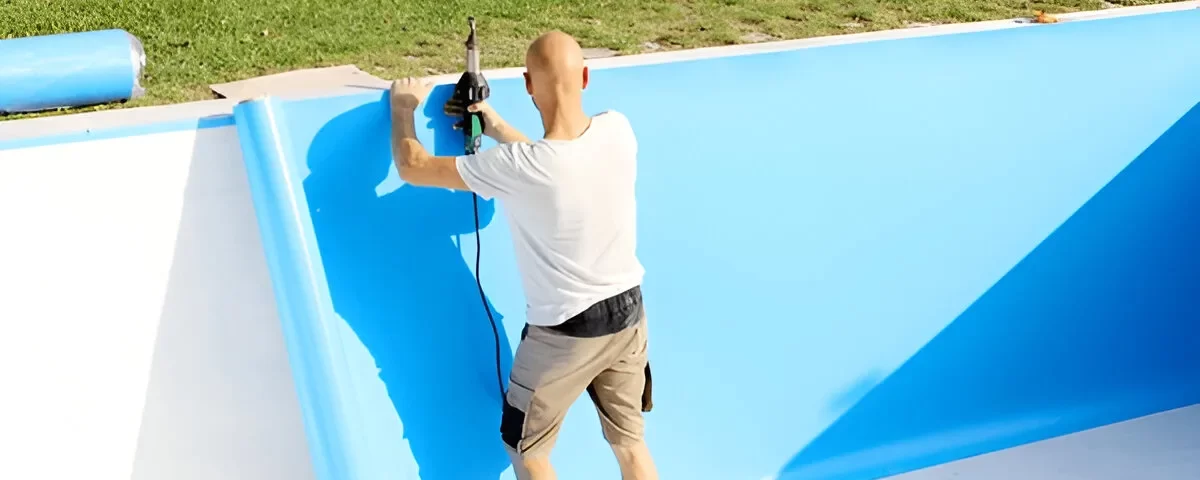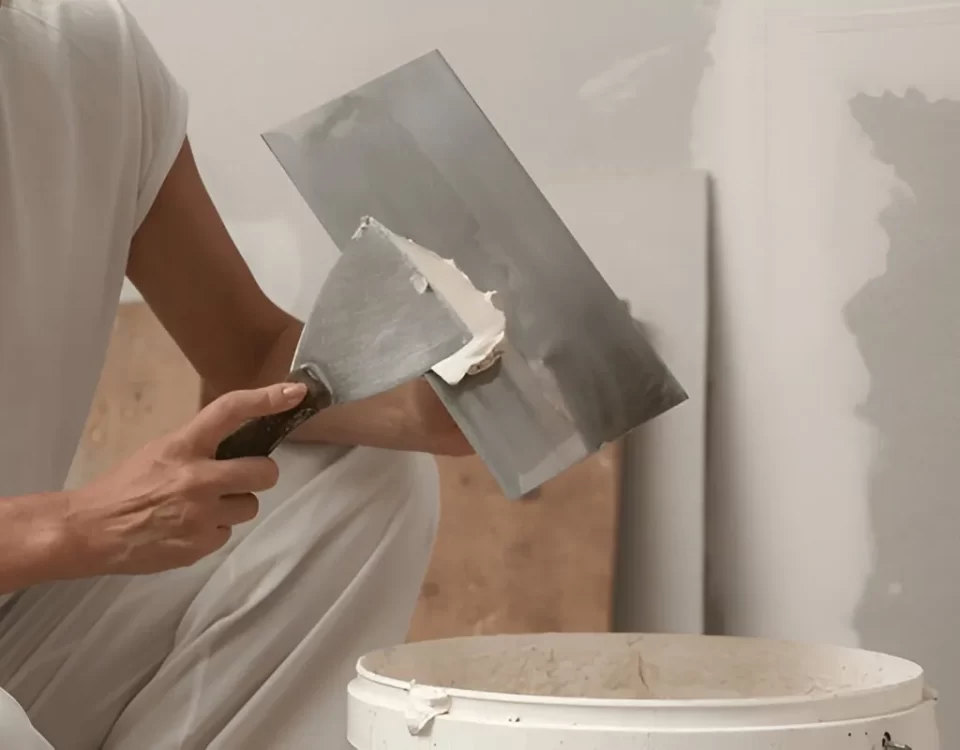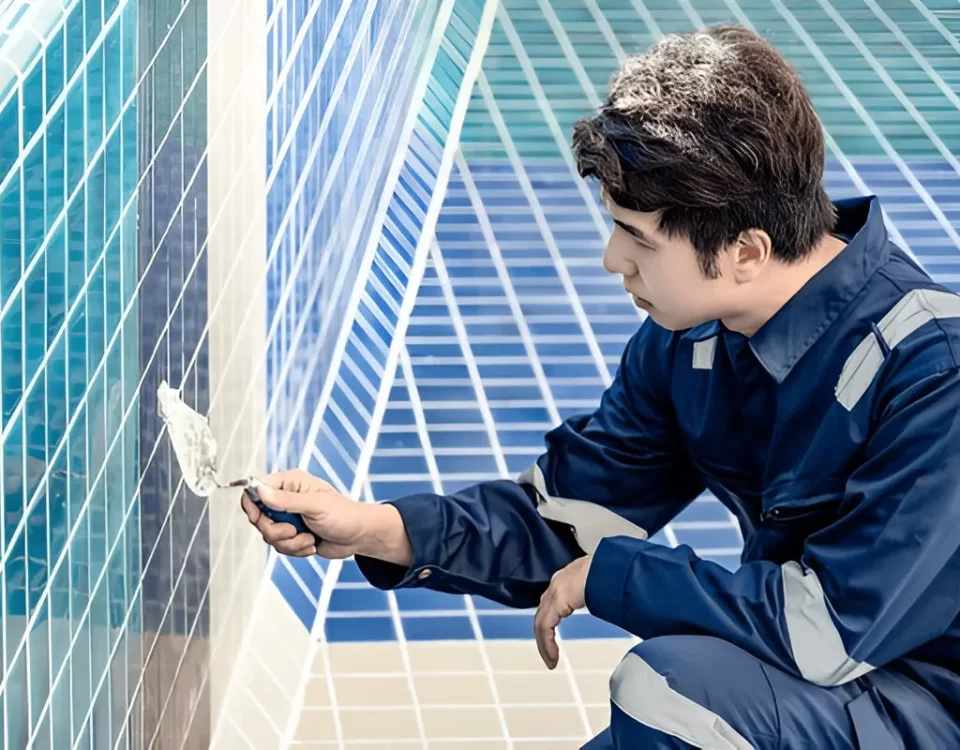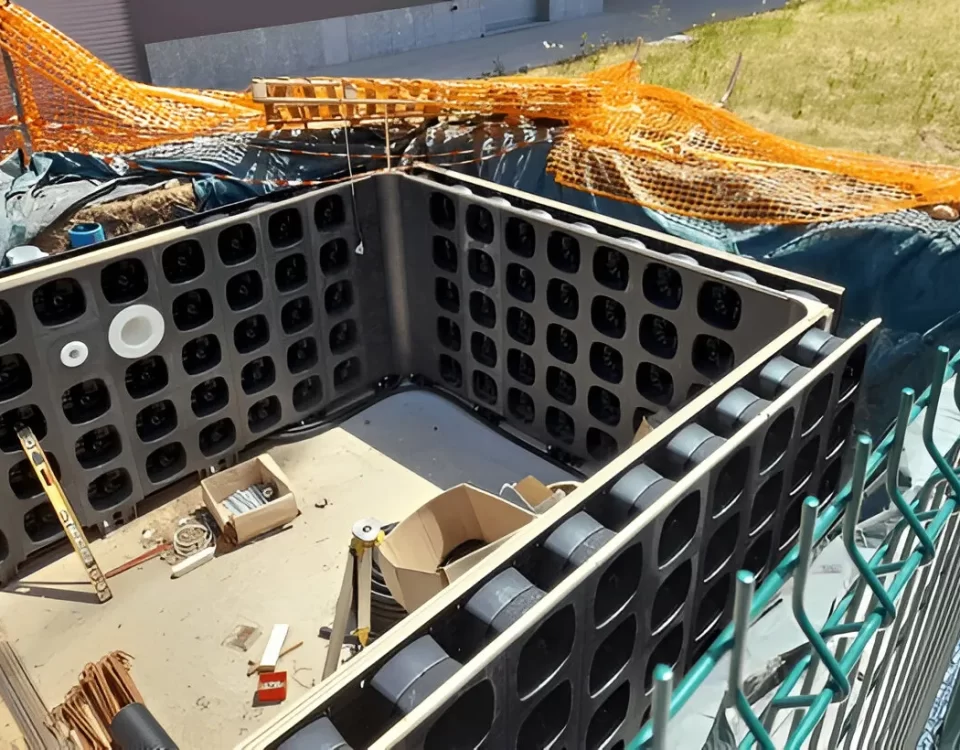Unveiling the Ultimate Insulation Materials Showdown

Aquaguard: Your Ultimate Foundation Waterproofing Solution
May 29, 2025
Master the Art of Drywall: Expert Installation Tips Revealed!
May 29, 2025Introduction to Insulation Materials
In the context of swimming pools, insulation materials play a pivotal role in optimizing both the functionality and sustainability of pool environments. When designed and implemented effectively, insulation not only safeguards against the external elements but also enhances the overall swimming experience. As swimming pools become increasingly integrated into modern lifestyles, the necessity for efficient insulation has never been more pronounced.
One of the predominant functions of insulation in swimming pools is to maintain a consistent water temperature. Fluctuations in outdoor temperature can lead to significant discomfort for swimmers, and even more critically, they can necessitate increased reliance on heating systems, thereby inflating energy costs. With appropriate insulation, heat retention is maximized, ensuring the water remains warm and inviting without excessive energy consumption.
Moreover, quality insulation materials can act as a barrier to heat loss during nighttime or cooler weather conditions. By minimizing the transfer of heat from the water to the air, insulation helps keep the pool’s thermal properties intact. This approach not only conserves energy but also significantly extends the swimming season, allowing pool owners to enjoy their investment for a longer period throughout the year.
Energy Cost Reductions
Incorporating proper insulation materials can yield substantial savings on energy bills. For instance, studies show that well-insulated pools can save up to 50% on heating costs. By investing in high-quality insulation, pool owners can enjoy a swift return on investment through reduced utility expenses. The long-term benefits are compounded by the reduction in maintenance costs associated with heating systems that are less taxed.
The types of insulation materials available for swimming pools vary widely, from rigid foam boards to spray foam insulations and insulating pool covers. Each comes with its unique set of benefits and drawbacks, yet they all serve the fundamental purpose of enhancing thermal performance. The selection of the appropriate material is crucial, as it directly impacts not only the thermal efficiency but also the overall durability of the pool structure.
| Insulation Material | Thermal Resistance (R-Value) | Cost Efficiency | Durability |
|---|---|---|---|
| Rigid Foam Board | R-4 to R-6 | High | Long-lasting |
| Spray Foam | R-6 to R-7 | Moderate | Very durable |
| Insulating Pool Covers | Varies | Very high | Seasonal |
In summation, the choice of insulation materials directly impacts the efficiency, comfort, and overall operational cost of swimming pools. By understanding the significance of each type of insulation, pool owners can make informed decisions that align with their goals for energy conservation, thermal regulation, and long-term sustainability.
Types of Insulation Materials
1. Fiberglass Insulation
Fiberglass insulation is a widely used material in swimming pool construction due to its cost-effectiveness and ease of installation. Composed of tiny glass fibers, this material is lightweight and can fit into various spaces.
Pros: Its primary virtue lies in its thermal resistance, providing substantial energy efficiency. Additionally, fiberglass is non-combustible and offers good moisture resistance. Most notably, it is one of the most affordable insulation options available.
Cons: However, it has limitations, including a susceptibility to water damage if not properly sealed, which may compromise its insulating capabilities. Furthermore, it may emit fine glass particles, necessitating the use of protective gear during installation.
2. Foam Board Insulation
Foam board insulation, often comprised of polystyrene or polyurethane, offers superior thermal performance compared to fiberglass. This rigid insulation material is known for its durability and moisture resistance, making it an excellent choice for pool environments.
Pros: Foam boards have a low thermal conductivity, translating to exceptional energy efficiency and reduced energy bills. They are also lightweight and easy to install, with minimal seams that decrease heat loss.
Cons: On the downside, foam board materials may be more expensive than fiberglass, raising initial costs. Their rigidity can also make installation slightly more challenging in irregular spaces.
3. Spray Foam Insulation
Spray foam insulation represents one of the most effective insulation options available, expanding on application to create a seamless barrier. This material offers excellent air sealing properties, making it ideal for reducing energy loss around swimming pools.
Pros: The primary advantage of spray foam insulation is its superior energy efficiency, providing an airtight seal that significantly minimizes water and air infiltration. Additionally, it serves as both insulation and a moisture barrier, protecting against mold and mildew.
Cons: Despite its impressive benefits, spray foam tends to be the most expensive insulation option. Moreover, its installation requires professional expertise to ensure proper application, which may further add to costs.
Comparative Summary Table
| Insulation Material | Effectiveness | Durability | Cost |
|---|---|---|---|
| Fiberglass | Medium | Medium | Low |
| Foam Board | High | High | Medium |
| Spray Foam | Very High | Very High | High |
Fiberglass Insulation
Fiberglass insulation is a widely used material, particularly in the context of swimming pools, for enhancing thermal efficiency. At its core, fiberglass insulation comprises tiny glass fibers that create a network of air pockets, effectively reducing the transfer of heat. This passive insulation method works by trapping air, which is a poor conductor of heat, thereby preventing warmth from escaping and cold from penetrating. When applied to swimming pool structures, it serves not only to maintain optimal water temperature but also minimizes heating costs, providing a sustainable solution for pool owners who prioritize energy efficiency.
Advantages of Fiberglass Insulation
Choosing fiberglass insulation for your swimming pool presents several undeniable benefits:
- Energy Efficiency: Due to its high R-value per inch, fiberglass significantly reduces energy consumption, which translates to lower utility bills.
- Durability: Unlike some organic insulators, fiberglass is resistant to decay, mold, and the damaging effects of water, ensuring longevity.
- Non-combustibility: Fiberglass is inherently non-combustible, offering an added layer of safety as it does not ignite or propagate flames.
- Cost-Effectiveness: Generally, fiberglass insulation is more affordable compared to various alternatives, making it an attractive option for budget-conscious pool owners.
Disadvantages of Fiberglass Insulation
Despite its benefits, fiberglass insulation also carries certain drawbacks that warrant consideration:
- Installation Challenges: Proper installation is crucial for optimal performance; poor application can lead to thermal bridging and reduced effectiveness.
- Irritants: The tiny glass fibers can become airborne during handling and installation, potentially causing skin irritation or respiratory issues.
- Environmental Impact: Manufacturing fiberglass involves energy-intensive processes which may have a notable carbon footprint, raising concerns among eco-conscious consumers.
Installation Tips for Fiberglass Insulation
To gain the maximum benefit from fiberglass insulation in swimming pools, careful installation is paramount:
- Preparation: Ensure that the surfaces where insulation will be applied are clean, dry, and free of debris. This will enhance adhesion and effectiveness.
- Cutting and Fitting: Measure sections accurately before cutting fiberglass batt insulation, allowing it to fit snugly against walls and floors without gaps.
- Sealing Gaps: Use specialized sealants to close gaps between the insulation and the pool structure, preventing air leaks and enhancing thermal performance.
- Protective Gear: Wear protective clothing, gloves, and masks during installation to mitigate exposure to airborne fiberglass particles and protect health.
Maintenance of Fiberglass Insulation
Once installed, maintaining fiberglass insulation is relatively straightforward but essential for preserving its performance:
- Regular Inspections: Periodically check for signs of moisture intrusion or damage. Address issues immediately to prevent mold growth and loss of insulation efficiency.
- Cleaning: Use a damp cloth or gentle vacuum to eliminate dust and debris from the exposed surfaces of the insulation to maintain a healthy swimming environment.
- Moisture Control: Ensure proper drainage around the pool area to prevent water accumulation, which can compromise the integrity of fiberglass insulation over time.
Foam Board Insulation
Foam board insulation is an invaluable asset in the realm of swimming pool construction and maintenance, serving a critical role in temperature regulation and energy efficiency. Primarily made from materials such as polystyrene or polyisocyanurate, foam board insulation is strategically placed around swimming pool perimeters, beneath pool decks, or in walls to retain heat. This method of insulation provides a seamless barrier against temperature fluctuations, ensuring that the pool water remains at a comfortable level throughout the year.
Benefits of Foam Board Insulation for Maintaining Pool Temperature
The principal advantage of foam board insulation lies in its superior thermal resistance. This insulation type boasts a high R-value, which measures the material’s resistance to heat flow; the higher the R-value, the more effective the insulation. By maintaining water temperatures, foam board insulation reduces energy consumption associated with heating systems, ultimately lowering utility bills. Moreover, by preventing heat loss during cooler nights or inclement weather, foam board insulation ensures a more consistent swimming environment, enhancing the overall swimming experience.
Additionally, foam board insulation is remarkably lightweight, facilitating ease of installation and integration into various pool designs. This adaptability makes it suitable for both in-ground and above-ground pools. The durability of foam board materials further ensures they withstand potentially damaging factors, such as moisture and chemicals commonly found in pool environments. As a result, pool owners can enjoy long-term insulation benefits without the need for frequent replacements.
Considerations for Choosing Foam Board Insulation for Different Pool Types
When selecting foam board insulation, it is essential to consider the specific needs of different pool types. For _in-ground pools_, insulation must provide robust protection against ground temperature fluctuations. Here, heavier-density foam boards are advisable to withstand soil pressures and external elements. On the other hand, _above-ground pools_ may benefit from lighter foam board options that still provide adequate insulation while remaining cost-effective.
Geographical climate is another critical consideration. In colder regions, where maintaining a stable pool temperature is paramount, opting for a foam board with a higher R-value can offer significant advantages. Conversely, for warmer regions, the focus may shift towards balancing insulation with ventilation to avoid overheating, which makes selecting the appropriate thickness and density paramount.
| Pool Type | Recommended Foam Board Thickness | R-Value |
|---|---|---|
| In-Ground Pools | 1-2 inches | R-5 to R-7 |
| Above-Ground Pools | 0.5-1 inch | R-4 to R-6 |
| Cold Climate Areas | 2 inches or more | R-7 and above |
Moreover, it is advisable to consider the installation method for foam board insulation, particularly regarding its compatibility with existing pool structures. Whether using adhesives, mechanical fastening, or a simple tuck-in approach, ensuring a snug fit will maximize thermal performance. Additionally, proper sealing around edges to prevent moisture intrusion is essential to enhance the durability and efficiency of the insulation over time.
Spray Foam Insulation
Spray foam insulation is an innovative solution that offers a plethora of benefits when it comes to enhancing the energy efficiency of swimming pools. This method of insulation involves the application of a liquid foam compound that expands upon exposure to air, creating a seamless barrier that adheres to surfaces. In the context of swimming pools, spray foam insulation can be utilized in various applications, including the insulation of pool shells, plumbing lines, and surrounding areas. The result is a highly insulated environment that minimizes heat loss and helps maintain comfortable water temperatures, ultimately contributing to prolonged swimming seasons and reduced energy costs.
Application Techniques
The application of spray foam insulation in swimming pools begins with thorough surface preparation to ensure optimal adhesion. The foam is typically sprayed directly onto clean, dry surfaces and can be applied in either open-cell or closed-cell configurations, depending on the specific insulating needs and local climate conditions. As the foam expands, it fills gaps and voids, providing a tight seal that effectively reduces air infiltration and enhances the overall stability of the pool structure. For maximum durability, a protective coating is often applied over the foam to shield it from UV exposure and potential chemical damage from pool maintenance products.
Open-Cell vs. Closed-Cell Spray Foam Insulation
Understanding the distinction between open-cell and closed-cell spray foam insulation is crucial for making an informed decision about which material to use in your swimming pool project. Open-cell spray foam is characterized by its lower density and provides sufficient insulation for interior applications. It allows for some vapor diffusion, which can be beneficial in reducing humidity levels. However, it is less effective in resisting water intrusion and is typically utilized in climates where moisture isn’t a significant concern.
On the other hand, closed-cell spray foam insulation boasts a higher density and a more robust barrier against moisture infiltration. It serves as both a high-performance insulator and a vapor retarder, making it ideal for exterior applications and swimming pool environments that experience high humidity levels. While closed-cell foam is more expensive, the benefits it offers in terms of durability, moisture resistance, and energy efficiency often justify the initial investment.
Environmental Impact and Energy Efficiency
The environmental impact of spray foam insulation is a topic of increasing relevance as homeowners and builders seek sustainable building materials. Many modern spray foam products are produced with eco-friendly blowing agents that have lower global warming potential than their predecessors. This transition aligns with growing sustainability initiatives, contributing to improved energy efficiency throughout a building’s lifespan. Utilizing spray foam insulation in swimming pools can lead to significant energy savings by reducing the workload on heating systems and minimizing heat loss during cooler months.
| Insulation Type | Density (lbs/ft³) | R-Value per Inch | Moisture Resistance | Energy Efficiency |
|---|---|---|---|---|
| Open-Cell Spray Foam | 0.5 – 1.0 | 3.5 – 4.0 | Low | Moderate |
| Closed-Cell Spray Foam | 2.0 – 3.0 | 6.0 – 7.0 | High | High |
Choosing the right insulation material for swimming pools is essential for optimizing performance and longevity. By carefully considering the application techniques, the differences between open-cell and closed-cell spray foam insulation, and the environmental implications, pool owners can make judicious decisions that bolster energy efficiency while minimizing their ecological footprint.
Cost Comparison of Insulation Materials
When it comes to insulating your swimming pool, understanding the cost dynamics of various insulation materials is essential for making an informed decision. The investment in insulation can vary significantly depending on the type of material chosen, but this upfront cost often sets the stage for long-term savings and efficiency in pool maintenance.
Upfront Costs and Long-term Savings
To provide a clearer perspective, let’s break down the costs associated with the most common insulation materials. Here’s a comparative table of upfront costs per square foot along with estimated long-term savings:
| Insulation Material | Upfront Cost ($/sq. ft.) | Estimated Annual Savings ($) |
|---|---|---|
| Foam Board Insulation | 1.50 | 200 |
| Spray Foam Insulation | 2.50 | 300 |
| Fiberglass Batts | 1.00 | 150 |
| Reflective Insulation | 1.20 | 180 |
The initial investment in materials such as foam board or spray foam may appear higher, yet their superior insulation properties often result in substantial savings on energy bills over time. Opting for an insulation material with a higher initial cost can lead to reduced energy consumption, ultimately yielding significant long-term benefits for pool owners.
Factors to Consider When Budgeting for Pool Insulation
When budgeting for pool insulation, consider numerous factors beyond just the initial costs. First, assess your location and climate; varying temperatures and energy costs may influence your choice of insulation material. Additionally, the installation costs should not be overlooked, as some materials, like spray foam, may require professional installation, thus increasing overall expenses.
The size of your pool, the desired efficiency levels, and any specific design features also impact your budget. It is prudent to evaluate both the short-term and long-term financial implications of each material. That being said, materials with higher R-values (insulation effectiveness) can offset greater initial investments significantly by reducing long-term maintenance and energy expenditure.
Testimonials from Pool Owners
Inclusion of real-life case studies can be instrumental in illustrating the effectiveness of insulation choices. For instance, John, a pool owner from California, opted for spray foam insulation. He recounted that while he spent approximately $4,500 for the installation, his energy costs plummeted by $450 annually, making the payback period less than ten years—a testimony to the material’s efficiency.
On the other hand, Sarah, an East Coast pool owner, selected fiberglass batts and stated, “Though my immediate costs were around $2,500, I am finding that my energy bills have not changed significantly. I wish I had invested in a more efficient option like foam board.” Such insights highlight the importance of selecting the right insulation materials to optimize both upfront costs and long-term savings effectively.
Best Practices for Choosing Insulation Materials
Factors to Consider When Selecting the Right Insulation Material for a Swimming Pool
Choosing the appropriate insulation material for a swimming pool is critical for optimizing energy efficiency, enhancing comfort, and prolonging the structure’s lifespan. Several key factors should dictate your choice:
- Thermal Resistance (R-Value): The R-value measures the material’s thermal resistance; a higher R-value indicates better insulation. For swimming pools, materials with a minimum R-value of 5 to 10 are generally recommended, depending on the climate.
- Moisture Resistance: Given the aquatic environment, materials must resist water infiltration and maintain performance without degrading. Consider options like closed-cell foam or fiberglass that offer exceptional moisture resistance.
- Durability: Insulation should withstand temperature fluctuations, chemicals from pool water, and potential mechanical stress. Materials such as polystyrene and polyurethane are renowned for their robustness and longevity.
- Installation Ease: Look for materials that facilitate quick installation, especially if you plan on a DIY project. Lightweight options like reflective insulation can save significant labor time and cost.
Tips for Working with Contractors to Install Insulation Effectively
Engaging a professional contractor can ensure that the insulation installation is performed correctly and efficiently. To mitigate misunderstandings and enhance collaboration:
- Communicate Your Goals: Clearly outline your objectives regarding energy savings and durability. Specify the insulation materials you’re interested in and the reasons behind your preferences.
- Request Detailed Estimates: Ensure that quotes include not only the materials but also the labor involved. This can provide a basis for comparing different contractors and understanding potential hidden costs.
- Verify Experience and Qualifications: Check that your contractor has prior experience in installing pool insulations specifically. Request references or view completed projects to gauge their level of skill.
Recommendations for Ongoing Maintenance and Monitoring of Insulation Performance
Once your insulation is installed, maintaining its performance is crucial to long-term efficiency:
- Regular Inspections: Schedule annual or bi-annual inspections of the insulation to check for any signs of damage or wear, especially in transition areas. Look for moisture buildup, which could indicate compromised materials.
- Monitoring Temperature and Energy Consumption: Install temperature-monitoring systems that can provide insights into the pool’s thermal performance. Track energy bills to identify discrepancies that might signal insulation issues.
- 及时修复: If any signs of damage appear, address them immediately. Swift repairs can prevent minor problems from escalating into major losses of energy efficiency and structural integrity.
| Insulation Material | R-Value | Moisture Resistance | Durability |
|---|---|---|---|
| Closed-Cell Foam | 5-7 | Excellent | High |
| Polystyrene | 3-6 | Good | Very High |
| Fiberglass | 2-4 | Moderate | Medium |
| Reflective Foil | 2-3 | Good | High |
Conclusion
In examining the various insulation materials, we have highlighted the critical factors essential for effective swimming pool insulation. Insulation serves not only as a barrier against temperature fluctuations but also plays a significant role in enhancing energy efficiency. From traditional materials such as fiberglass to advanced options like spray foam, each type brings unique benefits that cater to different needs and preferences.
It is important to note that the effectiveness of insulation varies significantly based on several factors, including thermal resistance (R-value), moisture resistance, and long-term durability. For instance, while polyurethane foam boasts an impressive R-value and seals out moisture effectively, materials like reflective foil offer simplicity and lightweight properties that make installation straightforward. As pool owners, understanding these distinctions can wield considerable influence over your choice and, consequently, your pool’s energy consumption.
Moreover, the longevity and maintenance requirements of insulation materials must not be underestimated. Expanded Polystyrene (EPS) panels provide excellent longevity and are resistant to degradation over time, making them a worthy consideration. Conversely, while fiberglass presents initial cost benefits, it may require more frequent replacements, affecting overall cost-efficiency in the long run.
A well-insulated pool not only ensures optimal water temperatures, extending the swimming season, but it also reduces energy expenses significantly. Research indicates that effective insulation can lead to energy savings of up to 30% or more, depending on geographical location and pool usage patterns. This underscores the vitality of investing in quality insulation materials tailored to your specific conditions.
| Insulation Material | R-Value | Moisture Resistance | Longevity | Cost (per sq. ft.) |
|---|---|---|---|---|
| Fiberglass | 2.9 – 4.3 | Poor | 10-20 years | $0.50 – $1.50 |
| Spray Foam | 5.0 – 6.5 | Excellent | 20-30 years | $1.00 – $2.50 |
| Reflective Foil | 2.0 – 3.0 | Moderate | 15-25 years | $0.30 – $1.00 |
| Expanded Polystyrene (EPS) | 4.0 – 5.0 | Good | 25-50 years | $0.75 – $2.00 |
In light of these observations, we encourage all pool owners to assess their current insulation methods. Are they genuinely maximizing energy efficiency? Are there opportunities for upgrades that could save costs and enhance comfort? The right advice at the right time could transform your pool experience drastically—both in terms of enjoyment and financial savings. Assessing and potentially upgrading your insulation material is not merely a renovation choice but a strategic investment in sustainability and efficiency.
Stay Updated: Discover more about Construction & Materials swimming pool on Google News

Javier Morales is passionate about pool design, maintenance, and outdoor living. With years of hands-on experience, he offers practical tips, creative ideas, and expert insights to help readers make the most of their pool spaces. At Piscina Planet, Javier shares everything from seasonal care guides to the latest trends in pool innovation.




